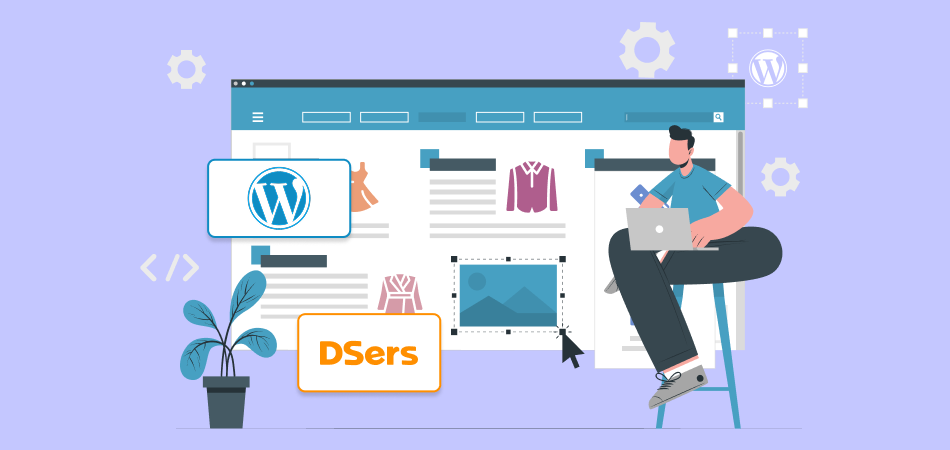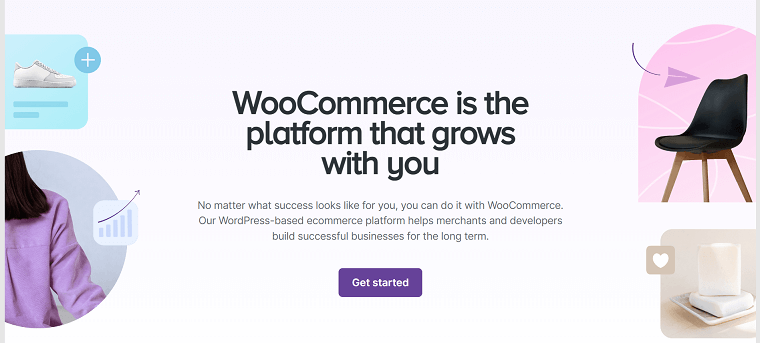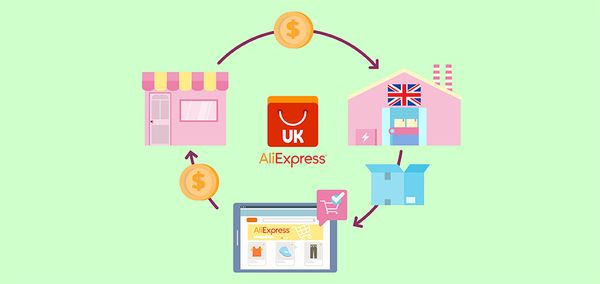The Ultimate Guide to WordPress Dropshipping Success 2025

One of the most accessible models for aspiring entrepreneurs is dropshipping, which allows you to sell products online without ever stocking inventory. When combined with the power and flexibility of WordPress, dropshipping becomes an even more powerful strategy for building a long-lasting, scalable brand.
This comprehensive guide will walk you through everything you need to know to succeed with WordPress dropshipping in 2025.
What Is WordPress Dropshipping
WordPress dropshipping refers to creating and managing an online store using WordPress and selling products without handling inventory.
When a customer orders, the details are automatically forwarded to your supplier or manufacturer, who then ships the product directly to the customer. You never touch the product or manage warehousing.

|
Place Orders to AliExpress In Seconds DSers Bulk Order - Place 100s of orders to AliExpress in a few seconds with a just few clicks |
To enable eCommerce features on WordPress, most dropshippers use the WooCommerce plugin, which transforms a basic WordPress site into a powerful online store.
This setup gives store owners full control over their website, branding, SEO, and integrations—without the limitations often found in closed platforms.
Why Choose WordPress for Dropshipping
With so many eCommerce platforms available, Shopify, BigCommerce, Wix, and more, you might wonder why WordPress is a good option for dropshipping. Here are some compelling reasons.
1. Complete Control and Customization
WordPress is an open-source platform, which means you can customize every aspect of your store’s functionality and design.
You can choose from thousands of themes and plugins to tailor your website exactly to your vision and business needs.
2. Cost-Effective and Scalable
Setting up a WordPress store is often more affordable in the long term. While there may be initial costs for hosting, themes, and plugins, you aren’t locked into monthly platform fees or commissions on every sale like you might be with Shopify.
3. SEO-Friendly
WordPress is known for its SEO capabilities, especially with plugins like Yoast SEO or Rank Math. This gives your store a better chance of ranking in search engines, an essential part of building organic traffic and reducing reliance on paid ads.
4. Wide Plugin Ecosystem
From marketing automation and payment gateways to product review tools and chatbots, WordPress offers thousands of plugins to enhance your store’s functionality, giving you flexibility and room to grow.
5. Community and Support
With a global community of developers, freelancers, and enthusiasts, it’s easy to find tutorials, support, and services to help you build and improve your WordPress dropshipping store.
How to Set Up a WordPress Dropshipping Site
Launching a dropshipping store with WordPress might sound intimidating at first, but it’s quite straightforward when broken down into clear steps. Here’s how to do it.
1. Choose a WordPress Theme
Choosing the right theme for your WordPress dropshipping store is not just about looks; it affects how fast your site loads, how users interact with your products, and even how well your store ranks in search engines.
When selecting a theme, prioritize speed and responsiveness. A theme that looks sleek but loads slowly can cost you sales, especially on mobile. Make sure it’s compatible with WooCommerce, as that will ensure all your product listings, cart pages, and checkout functions display correctly.
Themes like Astra, Flatsome, or OceanWP are popular choices because they’re lightweight, customizable, and built specifically with online stores in mind.
2. Install WooCommerce for Dropshipping
With your theme in place, it’s time to power your store with eCommerce functionality, and that’s where WooCommerce comes in. This free plugin transforms a standard WordPress site into a fully operational online store.

After installing WooCommerce, a setup wizard will guide you through the essentials: entering your business details, choosing your store currency, enabling tax settings, and selecting shipping options.
You’ll also configure your preferred payment methods, like PayPal, Stripe, or direct bank transfers, so customers can complete purchases securely.
WooCommerce also lays the foundation for everything else you’ll need, from product variations to checkout customization. It’s the control center of your dropshipping store, and it integrates easily with the dropshipping plugins you’ll install next.
3. Ensure an SSL Certificate for Your Site
An SSL certificate encrypts customer data, ensuring that information like credit card numbers and addresses stay secure during checkout.
Without SSL, browsers may flag your site as “Not Secure,” causing customers to abandon their carts out of concern. Most hosting providers include free SSL via Let’s Encrypt.
Make sure it’s enabled and activated. Once installed, verify that your website uses “https://” in the address bar and not “http://”. This not only builds customer trust but also positively impacts SEO.
4. Find a Suitable Dropshipping Plugin
Now it’s time to connect your store to product suppliers and automate fulfillment, this is where a dropshipping plugin comes in.
The plugin you choose will manage the connection between your WooCommerce store and the suppliers whose products you’ll be selling.
When selecting a plugin, look for one that allows you to easily import products, set automated pricing rules, and fulfill orders with a single click. Some, like DSers, are built specifically for AliExpress dropshipping.

|
Adapt Your Product Prices Automatically DSers Automatic Pricing - Pre-set Pricing Rule to mark-up your product price automatically |
A good plugin will also help with syncing inventory, so if an item sells out at the supplier’s warehouse, your site will update automatically. This avoids embarrassing and costly mistakes like selling products you can’t deliver.
5. Add Dropshipping Products to Your Store
With your plugin installed and connected to suppliers, you can now start adding products to your store. This part is exciting. It’s where your catalog begins to take shape, but it also requires careful attention.

|
Find Better Supplier For Products DSers Supplier Optimizer - One click to filter out the most proper suppliers for your products |
Instead of simply importing products as-is, invest time in customizing each listing. Rewrite product titles and descriptions using your brand’s tone of voice, making them easy to read, engaging, and informative. Replace or edit supplier photos if needed to ensure a clean and consistent look across your store.
When setting prices, consider your costs, including supplier price, shipping, and any transaction fees, and a margin that allows room for profit while remaining competitive.
6. Manage Your WordPress Dropshipping Orders
Once you begin receiving orders, the fulfillment process should be as seamless as possible. Your dropshipping plugin will typically forward order details to your supplier automatically. Here’s how to stay on top of everything.
- Track inventory levels through real-time sync with your supplier.
- Track order status and shipping information through the plugin dashboard.
- Update customers on order confirmation, shipping, and delivery.
- Handle returns and refunds based on your supplier’s policy.
Investing in a customer support plugin like Tidio or LiveChat can also help you quickly respond to order inquiries and boost customer satisfaction.
How to Market Your WordPress Dropshipping Store
Even with the perfect site and the right products, it might be hard to succeed without marketing. Here are three of the most effective strategies to drive traffic and grow your WordPress dropshipping business in 202
Email Marketing
Once your store is live, building an email list should become a top priority.
Email marketing gives you a direct, personal line of communication with your customers, making it one of the most powerful tools for increasing engagement and repeat sales.
Start by encouraging visitors to sign up for your newsletter or receive a discount in exchange for their email. Use forms or pop-ups strategically placed across your site, like during checkout or on product pages, to collect leads.
WordPress-friendly tools like MailPoet, Mailchimp, or Klaviyo make it easy to manage lists and campaigns.
Influencer Marketing
Influencer marketing allows you to tap into existing audiences through the voices they already trust.
By partnering with creators in your niche, you can expose your products to thousands of potential buyers without the high cost of traditional ads.
Reach out with a personalized pitch and propose collaboration. This could be gifting them a product in exchange for a review, running a joint giveaway, or setting up an affiliate relationship with commissions on sales.
Look for creators with high engagement rates, not just big follower counts. A smaller influencer with a loyal community can often generate more conversions than a celebrity with a passive audience.
Social Media Advertising
Paid social media ads are one of the fastest ways to get traffic to a new store, especially when launching a product or testing a new market.
With platforms like Facebook, Instagram, and TikTok, you can reach highly specific audiences based on interests, demographics, and behavior.
To start, install your advertising pixels on your website (such as Meta Pixel for Facebook or TikTok Pixel). This allows you to track customer actions like clicks, add-to-carts, and purchases.
Next, develop campaigns that directly engage your target audience. Incorporate striking visuals, highlight clear product benefits, and include strong calls to action. Test different creatives, headlines, and targeting to see what resonates best.
As your store grows, use retargeting to bring back visitors who didn’t purchase the first time. Show them the exact product they viewed or remind them of their abandoned cart with a limited-time offer.
Wrap Up
WordPress dropshipping is an exciting opportunity for entrepreneurs in 2025, offering flexibility, affordability, and complete control over your eCommerce business.
With the right theme, plugins, suppliers, and marketing strategy, you can build a store that not only looks professional but also delivers an excellent customer experience.
Unlike closed systems, WordPress gives you the ability to grow on your terms, whether that means adding custom functionality, creating a content-driven SEO strategy, or integrating new sales channels as you scale.











 Company
Company
 Why Choose DSers
Why Choose DSers
 Blog
Blog
 Help Center
Help Center




 Live Chat
Live Chat